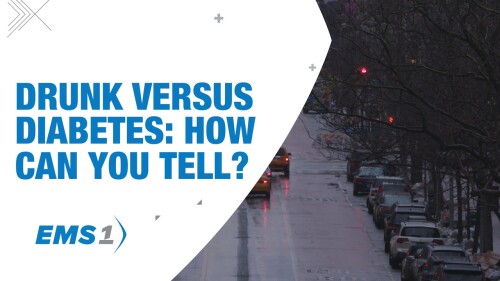Though the holidays fuel a potentially greater-than-usual number of alcohol-related illnesses and injuries in our call volume, EMS providers encounter patients who have had too much to drink any day of the year and at any hour of the day. When it gets especially busy, it becomes tempting to triage intoxicated patients and leave them in the care of well-meaning, but unprepared family and friends. Keep these seven following tips in mind when you encounter a patient who has had too much to drink:
1. Intoxication behavior begins before the legal limit
While intoxication when driving legally occurs at 0.08 g of ethanol per 100 mL of blood, that’s merely the definition. An individual may feel euphoric and engage in risky behavior much sooner than that.
2. Gender and alcohol difference
Women do tend to become intoxicated sooner than men. For example, a 140-pound male can reach the 0.08 limit within three bottles of beer, glasses of wine or shots of hard liquor, while a 140-pound female can hit the same limit in just two drinks.
3. Alcohol effects lag consumption
Alcohol takes about 45 minutes to hit its peak limit. In other words, the intoxicated individual weaving in front of you may become even more altered over time, even in the absence of more alcohol consumption.
4. Ethanol has emetic properties
Alcohol can trigger the vomiting effect without warning. Laterally positioning the patient will go a long way in keeping the patient’s airway patent. It makes sense to rest the patient facing away from your lap in the ambulance, but you must be able to continuously monitor the patient’s breathing during transport.
5. Adolescent males are at greater risk
Alcohol ingestion begins in the middle school population, sometimes by parents who condone drinking within their homes. The adolescent body is not as well prepared to handle alcohol poisoning and can alcohol intoxication can cause respiratory failure on its own.
6. Drugs and alcohol are a lethal mix
Alcohol and drugs often go together. Remain vigilant for the use of stimulants that may mask the effect of alcohol or depressants that can amplify intoxication.
7. Drunk or diabetic, know the difference
Finally, there are several conditions that can mimic alcohol intoxication, such as diabetic ketoacidosis or an evolving brain injury. Do not be lulled into a snap judgment about alcohol being the culprit; perform a consistent, reasonable assessment for each patient to differentiate drunk from diabetic. No matter how drunk the patient may appear to be.
The most important responsibility of an EMT or paramedic is to identify an alcohol intoxicated patient unable to control their own airway. Those patients are at risk of aspiration and require constant EMS monitoring and care during transport to the hospital.
This article, originally published December 27, 2011, has been updated .














